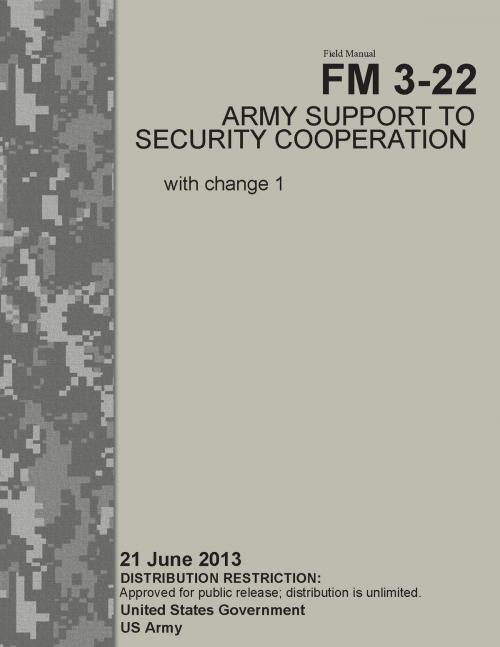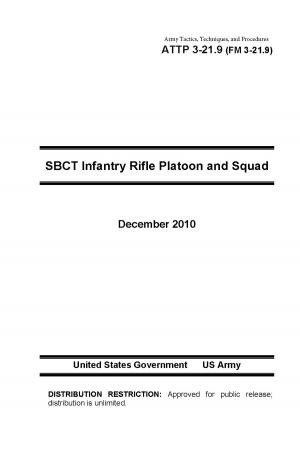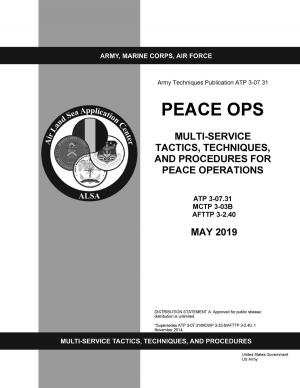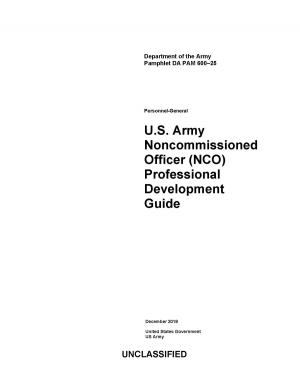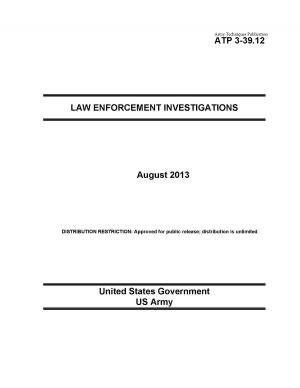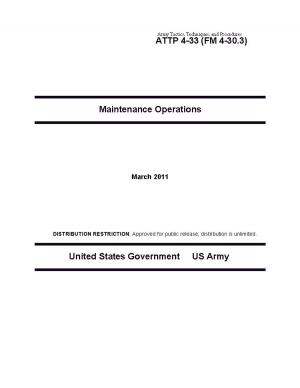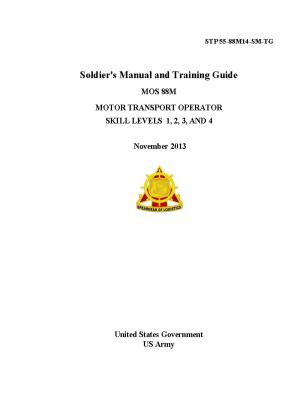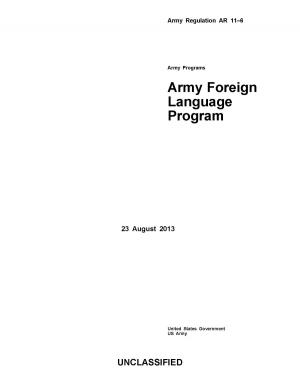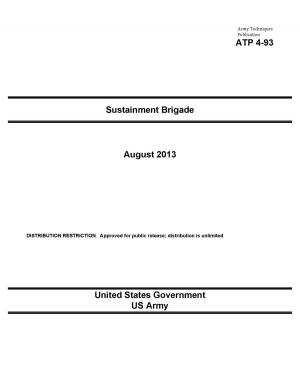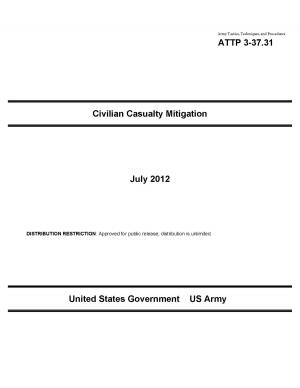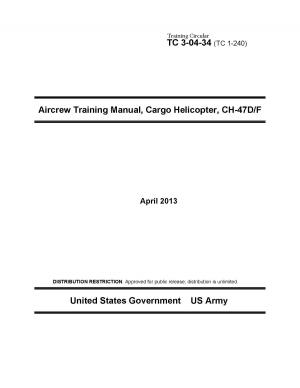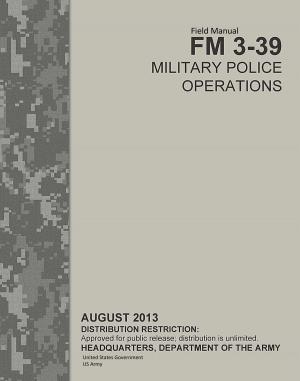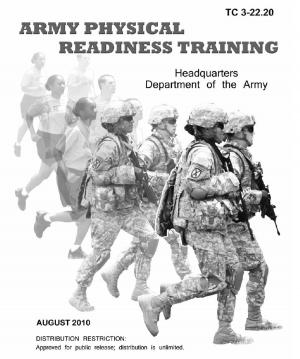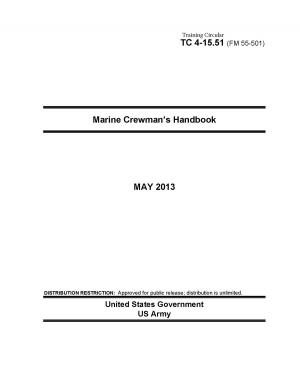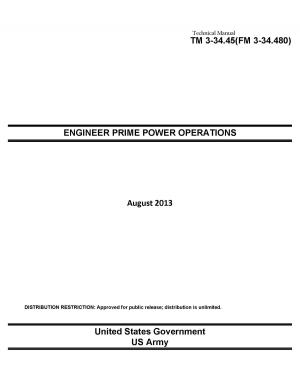Field Manual FM 3-22 Army Support to Security Cooperation with change 1 21 June 2013
Nonfiction, Reference & Language, Study Aids, Graduate & Professional, Armed Forces, Business & Finance, Business Reference, Government & Business, Science & Nature, Technology, Military Science| Author: | United States Government US Army | ISBN: | 1230000160449 |
| Publisher: | eBook Publishing Team | Publication: | August 17, 2013 |
| Imprint: | Language: | English |
| Author: | United States Government US Army |
| ISBN: | 1230000160449 |
| Publisher: | eBook Publishing Team |
| Publication: | August 17, 2013 |
| Imprint: | |
| Language: | English |
Field Manual (FM) 3-22 Army Support to Security Cooperation with change 1 provides doctrine for Army support to Department of Defense security cooperation. It explains how Army forces conduct security cooperation, from theater army through brigade level, including support from Headquarters, Department of the Army, functional Army Service component commands, major commands, and direct reporting units. Army modularity allows commanders to add selective capabilities to assist the brigade as it conducts security cooperation activities. The brigade and any additional augmentation required from higher echelons provide the framework for advisors to function and accomplish the mission— building partner capacity and capability—to achieve the desired end state.
This discussion builds on the doctrine in Army Doctrine Publication (ADP) 3-0 and Army Doctrine Reference Publication (ADRP) 3-0, Unified Land Operations. FM 3-22 establishes context for Army missions by explaining how security cooperation activities are an integral component of unified land operations, joint operations, and unified action. It shows how Army support to security cooperation is nested with national strategic direction. FM 3-22 is consistent and compatible with joint doctrine and emphasizes unified action. It uses text and concepts developed with North Atlantic Treaty Organization and American, British, Canadian, Australian Armies Program partners.
The principal audience for FM 3-22 is theater army security cooperation planners, division and brigade leaders and staffs, and Soldiers assigned or attached as advisors to brigades that execute security cooperation missions. Commanders and staffs of Army headquarters serving as joint task force or multinational headquarters should also refer to applicable joint or multinational doctrine concerning the range of military operations and joint or multinational forces. Trainers and educators throughout the Army will also use this manual.
Commanders, staffs, and subordinates ensure their decisions and actions comply with applicable U.S., international, and, in some cases, host-nation laws and regulations. Commanders at all levels ensure their Soldiers operate in accordance with the law of war and the rules of engagement. (See FM 27-10.)
FM 3-22 uses joint terms where applicable. Selected joint and Army terms and definitions appear in both the glossary and the text. Terms for which FM 3-22 is the proponent publication (the authority) are marked with an asterisk (*) in the glossary, and the definitions are boldfaced in the text. For other definitions shown in the text, the term is italicized, and the number of the proponent publication follows the definition.
FM 3-22 applies to the Active Army, the Army National Guard (ARNG)/Army National Guard of the United
States (ARNGUS), and the United States Army Reserve (USAR) unless otherwise stated.
Field Manual (FM) 3-22 Army Support to Security Cooperation with change 1 provides doctrine for Army support to Department of Defense security cooperation. It explains how Army forces conduct security cooperation, from theater army through brigade level, including support from Headquarters, Department of the Army, functional Army Service component commands, major commands, and direct reporting units. Army modularity allows commanders to add selective capabilities to assist the brigade as it conducts security cooperation activities. The brigade and any additional augmentation required from higher echelons provide the framework for advisors to function and accomplish the mission— building partner capacity and capability—to achieve the desired end state.
This discussion builds on the doctrine in Army Doctrine Publication (ADP) 3-0 and Army Doctrine Reference Publication (ADRP) 3-0, Unified Land Operations. FM 3-22 establishes context for Army missions by explaining how security cooperation activities are an integral component of unified land operations, joint operations, and unified action. It shows how Army support to security cooperation is nested with national strategic direction. FM 3-22 is consistent and compatible with joint doctrine and emphasizes unified action. It uses text and concepts developed with North Atlantic Treaty Organization and American, British, Canadian, Australian Armies Program partners.
The principal audience for FM 3-22 is theater army security cooperation planners, division and brigade leaders and staffs, and Soldiers assigned or attached as advisors to brigades that execute security cooperation missions. Commanders and staffs of Army headquarters serving as joint task force or multinational headquarters should also refer to applicable joint or multinational doctrine concerning the range of military operations and joint or multinational forces. Trainers and educators throughout the Army will also use this manual.
Commanders, staffs, and subordinates ensure their decisions and actions comply with applicable U.S., international, and, in some cases, host-nation laws and regulations. Commanders at all levels ensure their Soldiers operate in accordance with the law of war and the rules of engagement. (See FM 27-10.)
FM 3-22 uses joint terms where applicable. Selected joint and Army terms and definitions appear in both the glossary and the text. Terms for which FM 3-22 is the proponent publication (the authority) are marked with an asterisk (*) in the glossary, and the definitions are boldfaced in the text. For other definitions shown in the text, the term is italicized, and the number of the proponent publication follows the definition.
FM 3-22 applies to the Active Army, the Army National Guard (ARNG)/Army National Guard of the United
States (ARNGUS), and the United States Army Reserve (USAR) unless otherwise stated.
